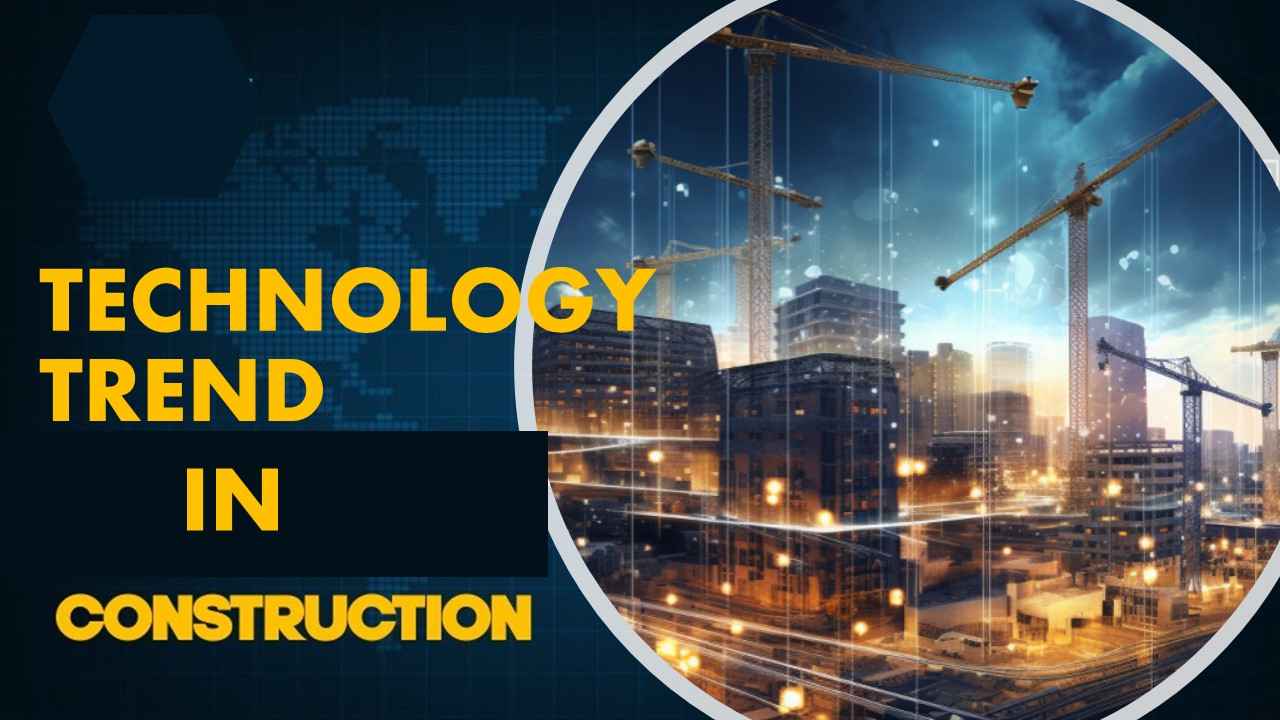Technology Trends Shaping the Future of Construction Worldwide
- By
- Pooja |
- January 20, 2024 |
- Civil Engineering, Innovation,

Table of Contents
Building Information Modeling (BIM):
Sustainable Construction Materials:
Augmented Reality (AR) and Virtual Reality (VR):
Internet of Things (IoT) and Smart Construction:
Modular and Prefabricated Construction:
5G Technology and Connectivity:
The construction industry, traditionally conservative, is undergoing a radical transformation fueled by technological advancements. From robotics and artificial intelligence to sustainable materials and augmented reality, a myriad of innovations is reshaping how buildings are designed, constructed, and maintained globally. These technology trends are not only enhancing efficiency and safety but also revolutionizing the industry's approach toward sustainability and cost-effectiveness. In this article, we will delve into the significant technological trends that are propelling the construction sector into a new era of innovation and development.
Building Information Modeling (BIM):
Building Information Modeling (BIM) stands at the forefront of technological evolution in construction. BIM is a digital representation of a building's physical and functional characteristics, enabling stakeholders to visualize the entire project lifecycle. It integrates 3D modelling with data-driven insights, facilitating better collaboration among architects, engineers, and contractors. Through BIM, stakeholders can identify and resolve potential clashes or issues in the design phase, optimizing construction efficiency and reducing errors during the actual build. The utilization of BIM leads to improved cost estimation, enhanced project management, and streamlined operations, ultimately resulting in better-built structures and reduced waste.
Robotics and Automation:
Robotics and automation are revolutionizing construction sites worldwide. Autonomous equipment, drones, and robotic arms are increasingly used for various tasks, such as bricklaying, 3D printing, and excavation. These technologies enhance productivity, improve accuracy, and mitigate safety risks for workers. Robotic arms can precisely place materials, while 3D printers can create complex structures with reduced time and material waste. Drones equipped with cameras and sensors enable aerial surveys, site inspections, and progress monitoring, providing real-time data for better decision-making. The integration of robotics and automation minimizes labour-intensive work, allowing human workers to focus on more intricate and skilled tasks, thereby accelerating project timelines and reducing costs.
Read More:
Sustainable Construction Materials:
The quest for sustainability has led to the development and utilization of eco-friendly construction materials. Innovations such as recycled steel, engineered wood, and environmentally friendly concrete significantly reduce the environmental impact of construction. Additionally, materials like cross-laminated timber (CLT) offer structural strength while sequestering carbon dioxide. Furthermore, advancements in 3D printing have enabled the creation of buildings using recycled materials or sustainable compounds, reducing waste and carbon emissions. Adopting these sustainable materials not only aligns with environmental goals but also promotes healthier indoor environments and enhances long-term durability and resilience of structures.
Augmented Reality (AR) and Virtual Reality (VR):
AR and VR technologies are transforming the way construction projects are planned, visualized, and executed. AR overlays digital information onto the physical environment, allowing on-site workers to access real-time data, visualize designs, and detect errors before they occur. VR, on the other hand, creates immersive experiences that enable stakeholders to walk through virtual models of buildings, experiencing the space before construction commences. These technologies facilitate better communication, improve training for workers, and enhance client engagement by offering realistic simulations. Architects and engineers can collaborate more effectively, making informed decisions and adjustments to designs, resulting in reduced rework and enhanced project efficiency.
Internet of Things (IoT) and Smart Construction:
The Internet of Things (IoT) is revolutionizing the construction industry by enabling connectivity among various devices and systems. IoT sensors embedded in construction equipment, machinery, and building components collect and transmit data in real-time, providing insights into the project's performance. These sensors monitor temperature, humidity, structural integrity, and equipment utilization, allowing for proactive maintenance and better resource management. Smart construction sites equipped with IoT technology enhance safety by detecting potential hazards and improving overall operational efficiency. Moreover, IoT-enabled smart buildings offer advanced functionalities like energy management, predictive maintenance, and occupant comfort by integrating systems such as HVAC, lighting, and security.
Modular and Prefabricated Construction:
Modular and prefabricated construction methods are gaining traction due to their efficiency and sustainability. These methods involve constructing building components off-site in controlled environments and assembling them on-site. Prefabrication reduces construction time, minimizes waste, and enhances quality control as modules are manufactured with precision. Modular construction offers flexibility and scalability, allowing for rapid deployment and customization according to project requirements. Additionally, these methods enable the use of innovative materials and technologies, promoting sustainability and cost-effectiveness while maintaining structural integrity.
5G Technology and Connectivity:
The advent of 5G technology is poised to transform construction operations by providing high-speed, low-latency connectivity. With faster data transmission and enhanced network capabilities, 5G enables real-time communication, remote collaboration, and seamless integration of technologies on construction sites. It supports applications like augmented reality, autonomous machinery, and IoT devices, allowing for efficient project management and improved decision-making. 5G's connectivity empowers construction teams with instant access to data, enabling faster problem-solving and reducing project delays. Moreover, it facilitates remote monitoring, enabling off-site experts to provide guidance and oversight, thereby enhancing productivity and quality assurance.
Conclusion:
The convergence of these technological trends—BIM, robotics, sustainable materials, AR/VR, IoT, modular construction, and 5G—is reshaping the construction industry at an unprecedented pace. These innovations collectively drive efficiency, sustainability, safety, and cost-effectiveness across all stages of construction projects. As these technologies mature and become more widely adopted, they will continue to redefine the construction landscape, fostering a new era of smarter, greener, and more resilient built environments worldwide. Embracing these advancements and fostering a culture of innovation will be pivotal for construction companies to stay competitive, meet evolving demands, and contribute to the creation of sustainable, technologically advanced infrastructure for future generations.
Please feel free to like, share and comment.
Admin, gcelab.com Please see our Pillar Post to know why we founded gcelab.com.
Read More:

Pooja
Founder at gcelab.com, Pooja is an Entrepreneur unlocking human potential. Working in the Principles of Lean Start-up, Pooja believes in Transparency and User Happiness the most. Pooja’s background in teaching gives her a sophisticated grasp on even the most tedious aspect of course building. She is passionate about people who believe that good is not enough.



